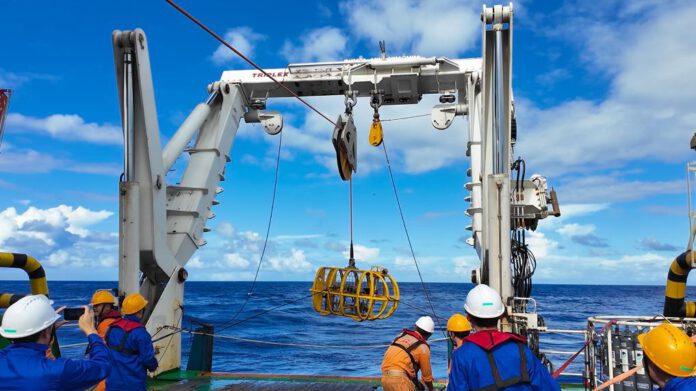
On November 19, Ltd., Dalian Maritime University, Nantong Liwei, Jiangsu Hengtong Marine and other research and development units successfully deployed the full-depth optical cable winch system, Haiwei GD11000. The system recently completed its maiden deep-sea survey mission aboard the HAIYANG DIZHI ERHAO vessel of the Guangzhou Marine Geological Survey in the South China Sea.
Haiwei GD11000 is currently the world’s only fully Chinese developed, completely independent, and controllable full-depth optical cable winch system. During the voyage, the cable length exceeded 11,000 meters, with operations conducted at water depths of over 4,000 meters, fully validating the system’s stability and operational capabilities in deep-sea environments.
According to reports, the optical cable winch system is critical for deploying, recovering, and towing large systems such as deep-sea towing systems and cable-controlled underwater robots. It serves as essential equipment for research vessels and plays an indispensable role in exploring and developing deep-sea resources.
As marine scientific research advances into deeper and more challenging environments, there is an increasing demand for winch systems that meet higher operational and precision requirements. Traditional optical cable winch systems, constrained by the weight of metal-armored cables, are unable to achieve full-depth operations. This has created an urgent need for the independent localization and development of full-depth optical cable winch systems.
The Haiwei GD11000 is capable of conducting scientific research operations at the greatest depths of all the world’s oceans. It is not only the first but also the only fully domestically developed, independent, and controllable full-depth optical cable winch system in existence.
Project Chief Scientist, Professor Li Wenhua from the Marine Engineering College at Dalian Maritime University, introduced that the winch system has a safe working load of at least 15 tonnes and an adjustable working speed of 0 to 120 m/min. It is equipped with a 13,000-meter-long non-metallic armored optical cable with a diameter of no more than 34 mm and a power transmission capacity of at least 51 kW, meeting the demands of multi-channel optical cable systems and deep-sea applications. The system supports scientific research operations at depths of up to 11,000 meters, making it the first to feature a 13,000-meter non-metallic armored optical cable and capable of operating at the greatest depths in all oceans.
It is reported that the next phase for Haiwei GD11000 involves regular deep-sea and polar survey missions. These operations will provide robust support for China’s marine scientific research goals of reaching the ocean, reaching the deep sea, and reaching the poles. Furthermore, it will offer technological assurance for the exploration and utilization of deep-sea resources, contributing to the development of China’s maritime capabilities and the construction of a strong transportation and maritime nation.
Source: SHKP, Xinhua, CGTN, Dalian Maritime University



